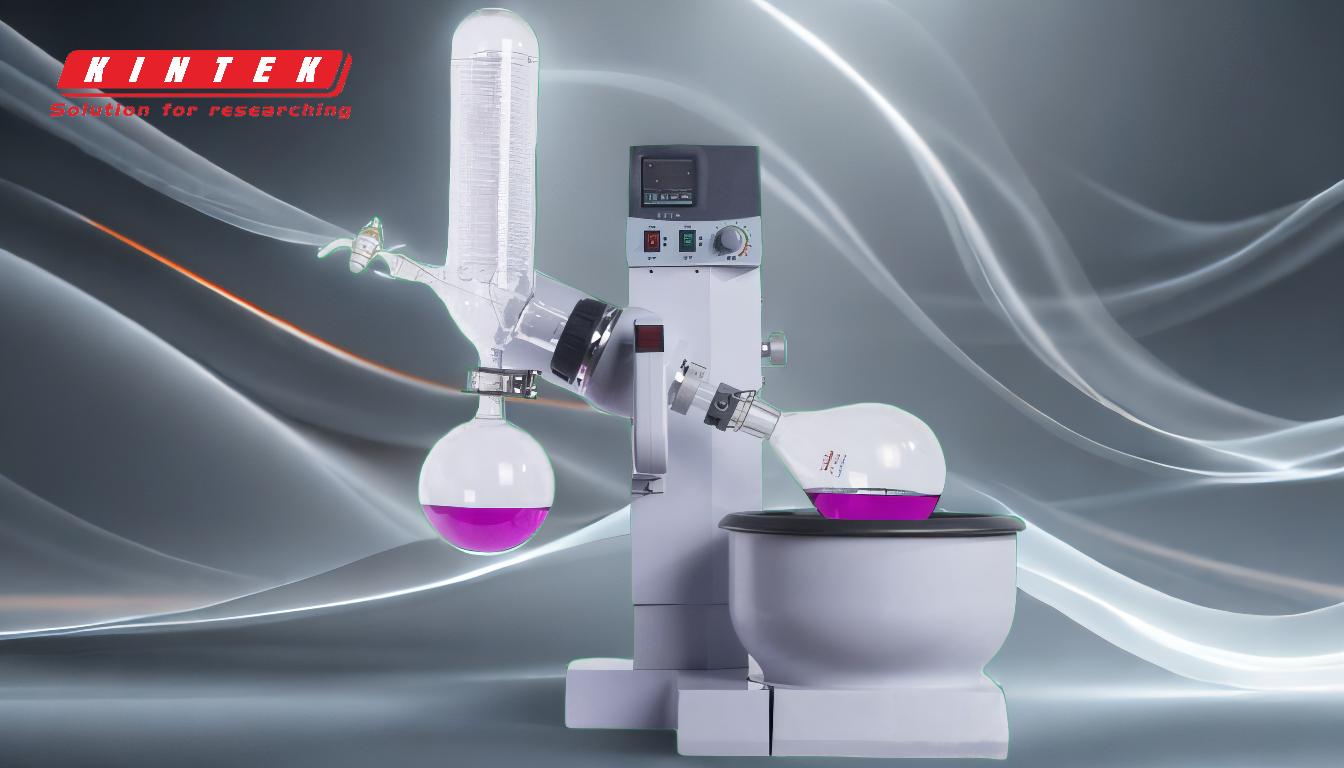When selecting a rotary evaporator, it is essential to consider a variety of factors to ensure the equipment meets the specific needs of your laboratory and the processes you intend to perform. Key considerations include the type and volume of solvents, the required evaporation speed, the materials used in the evaporator, and the available space in the lab. Additionally, factors such as the rotation speed range, vacuum level, temperature control, and the type of condenser play a crucial role in determining the efficiency and suitability of the rotary evaporator for your applications. Automation features, such as motorized lifts and automatic boiling point detection, can also enhance workflow efficiency. By carefully evaluating these factors, you can select a rotary evaporator that aligns with your laboratory's requirements and ensures optimal performance.
Key Points Explained:

-
Quantity of Distillation and Sample Volume:
- Daily Sample Load: Determine the approximate number of samples you plan to distill each day. This will help you choose a rotary evaporator with the appropriate capacity and throughput.
- Sample Volume: Consider the size of the rotation flask, ensuring it is not more than half full during operation. This ensures efficient evaporation and prevents spillage.
-
Type of Solvents:
- Solvent Properties: Identify the solvents you will be using, including their boiling points, flammability, toxicity, and potential harm. This information is crucial for selecting the appropriate vacuum level, condenser type, and materials that are resistant to the solvents.
- Boiling Point Range: The boiling point range of the solvents will dictate the required vacuum level and heating/cooling capacity. Low-boiling solvents may require more vigorous cooling and lower vacuum levels.
-
Evaporation Speed and Throughput:
- Evaporation Speed: Consider the required evaporation speed based on the volume of solvents and the desired throughput. High-volume or rapid distillation processes may require more powerful cooling systems and higher rotation speeds.
- Rotation Speed Range: The rotation speed (rpm) affects the evaporation rate. Ensure the rotary evaporator offers a suitable range for your needs.
-
Materials of Construction:
- Material Compatibility: Choose materials that are compatible with the solvents and samples you will be working with. For example, acid-resistant systems are necessary for acidic samples, while glass or stainless steel may be suitable for other applications.
- Durability: Consider the durability and longevity of the materials, especially if you will be working with corrosive or reactive substances.
-
Vacuum and Condenser Cooling Options:
- Vacuum Level: The vacuum level (mm Hg or mbar) is critical for achieving the desired evaporation rate. Ensure the rotary evaporator can achieve the necessary vacuum for your solvents.
- Condenser Type: The type of condenser (e.g., reflux condenser, HP condenser, S condenser) should be chosen based on the solvent load and the specific application. High-volume or low-boiling solvents may require more robust cooling systems.
- Cooling Method: Consider the cooling method (e.g., water, glycol, or air cooling) and ensure it is sufficient for your solvent load and distillation speed.
-
Temperature and Pressure Control:
- Temperature Range: Ensure the rotary evaporator can achieve the necessary temperature range for your solvents. The temperature difference between the solvent solution and the condenser is crucial for efficient evaporation.
- Pressure Control: Integrated vacuum control can help maintain consistent pressure levels, which is important for achieving reproducible results.
-
Automation and User Interface:
- Automation Features: Look for features such as motorized lifts, automatic boiling point detection, and level sensors. These can streamline your workflow, reduce operational time, and improve safety.
- Displays and Controls: Consider the type of displays and controls available. User-friendly interfaces with clear displays can make operation easier and more efficient.
-
Space and Laboratory Constraints:
- Available Space: Ensure the rotary evaporator fits within the available space in your laboratory. Consider the footprint of the equipment and any additional components, such as chillers or vacuum pumps.
- Modularity: Some rotary evaporators offer modular designs that allow for customization based on your specific needs and space constraints.
-
Price and Manufacturer Reputation:
- Budget: Consider your budget and compare the price of different models. While cost is important, it should be balanced with the quality and features of the equipment.
- Manufacturer Reputation: Choose a reputable manufacturer known for producing reliable and durable equipment. Consider the availability of customer support and after-sales service.
-
Specific Application Requirements:
- Application-Specific Features: Depending on your specific application (e.g., cannabis extraction, recrystallization, or concentration processes), you may need specialized features such as HP condensers, reflux condensers, or level sensors.
- Sensitivity of Samples: If you are working with sensitive samples, ensure the rotary evaporator can handle them without causing degradation or contamination.
By carefully considering these factors, you can select a rotary evaporator that meets your laboratory's specific needs, ensuring efficient and safe operation.
Summary Table:
| Key Factor | Consideration |
|---|---|
| Sample Volume | Daily sample load and rotation flask size for efficient evaporation. |
| Solvent Type | Boiling point, flammability, and compatibility with materials. |
| Evaporation Speed | Required speed based on solvent volume and rotation speed range. |
| Materials | Acid-resistant or durable materials for corrosive or reactive substances. |
| Vacuum & Condenser | Vacuum level, condenser type, and cooling method for solvent load. |
| Temperature & Pressure | Temperature range and integrated vacuum control for consistent results. |
| Automation Features | Motorized lifts, automatic boiling point detection, and user-friendly interfaces. |
| Space Constraints | Footprint and modularity to fit lab space. |
| Budget & Reputation | Balance cost with quality and choose a reputable manufacturer. |
| Application Requirements | Specialized features for specific processes like cannabis extraction. |
Ready to find the perfect rotary evaporator for your lab? Contact us today for expert guidance!





















